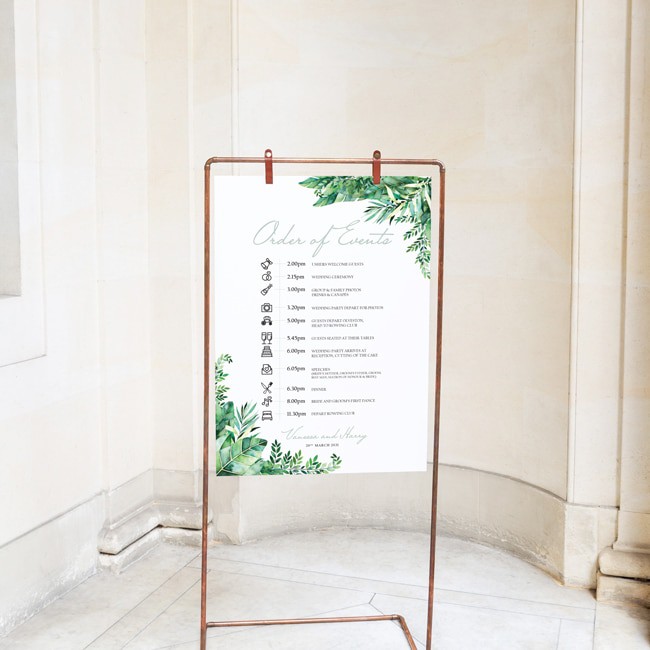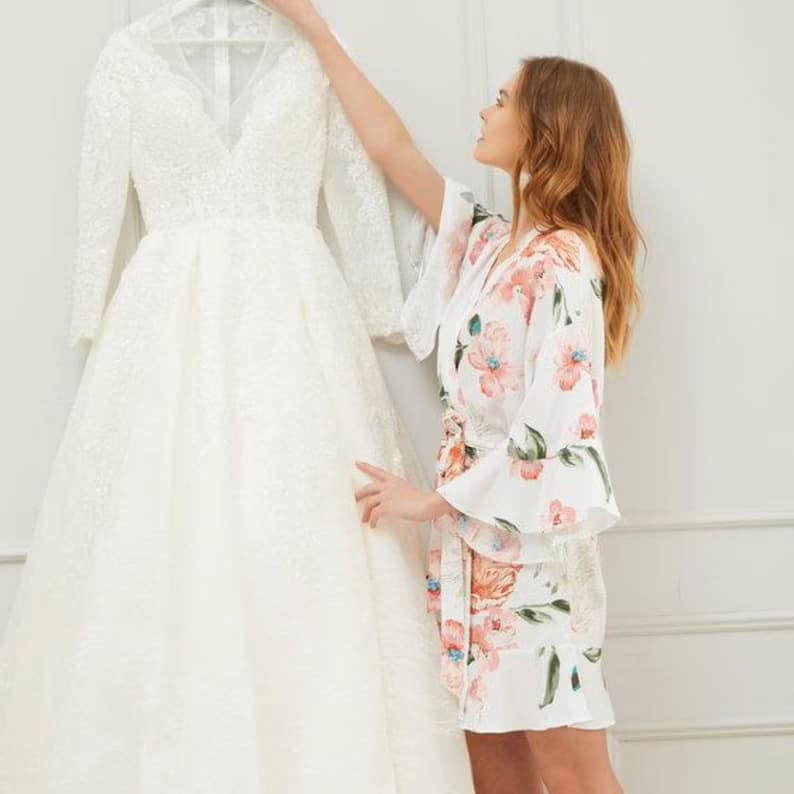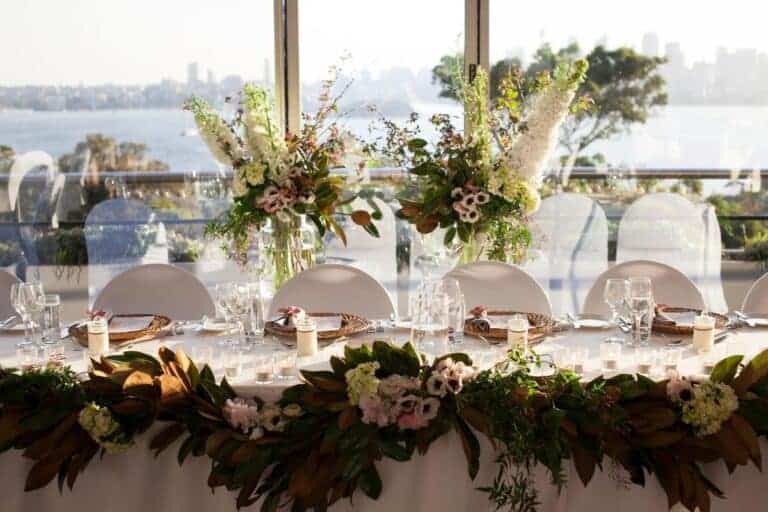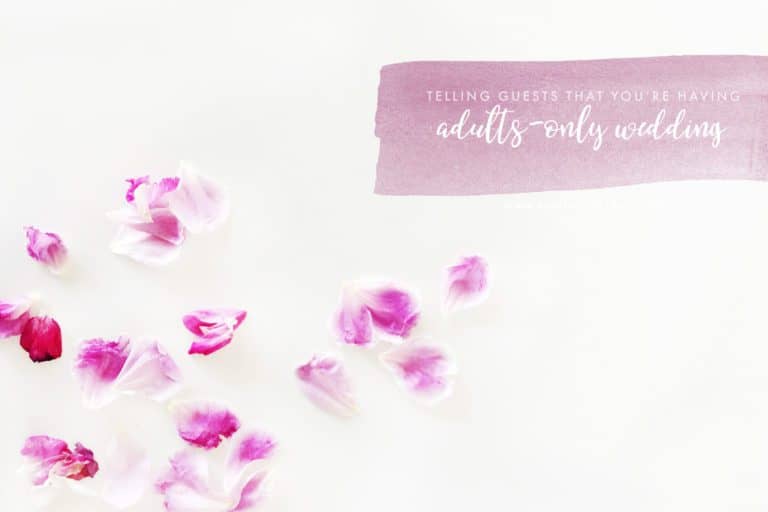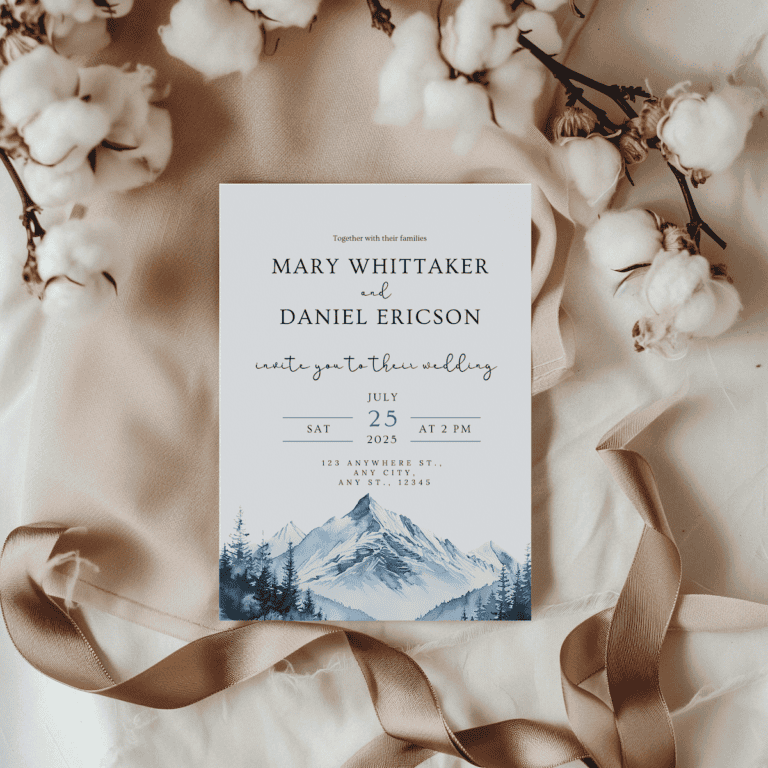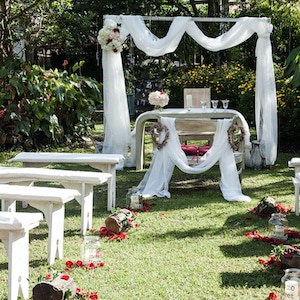Wedding Day Timeline (plus template!)
One of the keys to a smooth wedding day is a realistic timeline. But knowing how long to leave for speeches, photographs, and all the other bits and pieces can make creating a timeline a bit tricky.
See our tips below on creating a good wedding timeline, and use our wedding day timeline template PDF to create your own wedding day itinerary.
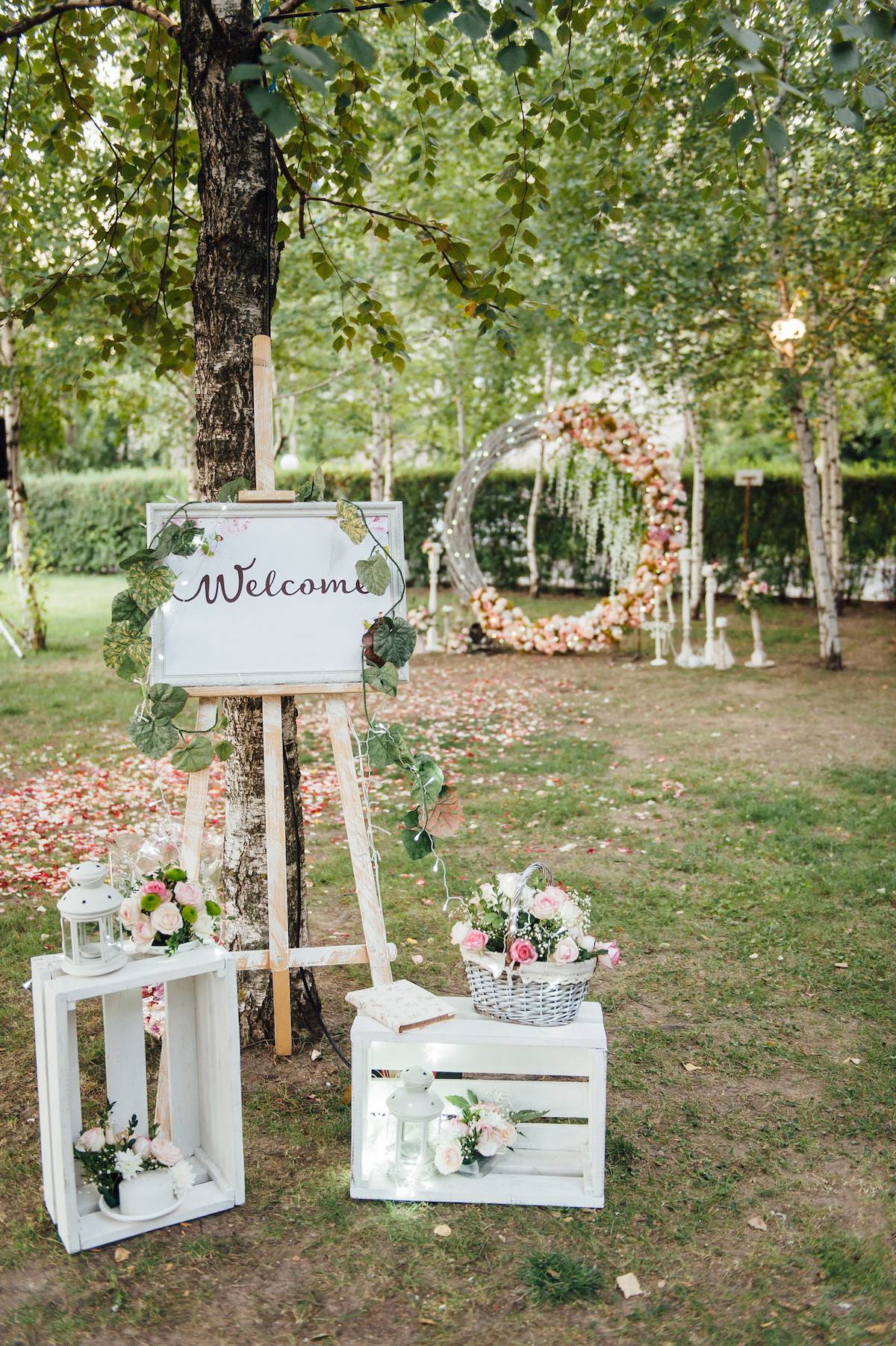
Why is it an important thing to have a solid wedding day timeline
If you have a wedding day timeline for everyone to follow, your bridal party and wedding professionals know what’s happening. That means less hassle for you on your big day while you’re trying to relax and enjoy the day. Planning everything out as it means you will utilize every vendor to the fullest. It also ensures you have enough time for everything.
The photographer won’t be waiting around for your hair and makeup to finish. Nor will the band be sitting on stage waiting for speeches to wrap up. If you have a wedding planner then they can help you sort this during the planning process. However, if you’re doing it on your own, here’s what you need to do.
Planning your wedding schedule
You should base your budget and timing around what’s important to you. If having the best time dancing the night away is the thing you’re both looking forward to the most, you need to prioritize this in your budget and in your timeline. Subtle decisions can make a big impact on your wedding timeline, so it’s worth considering this carefully.
How long do you need to allow for wedding day preparations?
Next, you need to figure out how long you need to allow for everything. Here’s where good communication and experienced wedding professionals are important. Ask your makeup artist how long you should allow for everyone’s makeup to get done. Check with the band how long they’ll play for. See what your photographer recommends in terms of timing. Confirm the end time of your venue booking.
Putting together your wedding day timeline (and what you should be including)
Once you’ve collated all the specific times, you can start to collate a rough wedding day schedule. You need to make your requirements fit your wedding. Work backward from the time you finish up at the venue.
Entertainment
How long does your band play for? For example, if it’s 4 hours, and the venue shuts down at 12, then the band needs to start at 8. If you run an hour late and they don’t begin till 9, that’s an hour you’ve paid for wasted.
Cake Cutting
The wedding cake cutting is traditionally cut after the formalities. After the cake has been cut is traditionally considered the earliest you can leave. Some older family members and guests might sneak away afterward. It’s not unusual to see couples do the cake cutting before the meal too.
This more recent tradition allows the moment to be captured a bit earlier in the evening, even during cocktail hour. The photographer can finish up soon after. This also allows the caterer a bit of time to get the cake sliced up if you’re serving the cake with dessert.
Speeches and toasts
You can have speeches after dinner, between courses, or even during the meal. Having them during the meal can be a good timesaver. Just be sure to let people know to keep eating, and tell venue staff to continue serving and clearing away plates.
A good MC should push along speeches and keep them to time. Also another tip – the more toasts, the more alcohol. If speechmakers leave toasts till the end of the speeches, this will keep bubbly consumption to a minimum. The MC could also tell guests to stay seated during toasts.
Meal
The type of meal service you pick will affect the time you need to allow for your meal. A buffet will take 20 minutes for 100 guests to go through. For bigger weddings, it might be best to get two buffet stations so that everyone is served in a timely manner. Family-style buffet (where dishes and bowls are served to the table) will take around 20 minutes to deliver to the tables.
Plated meals are timed to be around 45 minutes apart. Serving is much faster, but this can be a more expensive option as you’ll require extra serving staff. If you’re going to be short on time and have not done nibbles during the afternoon, you could plan to have bread or platters at the tables for when the guests arrive.
Wedding Photos
Your photos are often the thing that gets trimmed if you’re running late during the day. Therefore it pays to be organized here. Have a list of photos you’d like. If your photographer isn’t familiar with the venue or general area, suggest going on a scouting day around the venue and the local area. This way you can both figure out how long it’ll take to get between photo spots, and you can make decisions about the photos you want.
Allow time for family portraits, bridal party portraits, getting ready photos, and so forth. If you want to make sure your photographer gets a specific special moment, like the father of the bride seeing the bride in her dress, make sure you say so.
Receiving lines
Receiving lines are typical with church weddings, but they are also popular at more relaxed garden ceremonies. It depends on what the couple would like, and how the venue is set up too sometimes. A receiving line with up to 100 guests will take about 15 minutes to get through. For weddings with around 150 guests, allow 20 minutes.
Wedding Ceremony
Expect the groom and groomsmen to get to the ceremony location 30 to 45 minutes before the ceremony. Double-check with the celebrant, and with the venue (depending on the beginning time for the venue booking. You may only have 30 minutes before the official ceremony start time).
Your celebrant should be able to give you an estimate of how long the ceremony you’ve chosen will take. It’s usually about 30 minutes, or up to an hour for a traditional church service. It’s tradition for the ceremony to begin late, so plan for it and have your timeline start on the right foot.
Hair & Makeup Prep
It can take an hour for your hair and that again for your makeup. Check with your make-up artist and hairstylist what they think. See if they’ll arrange extra staff if you have a larger wedding party and/or an earlier ceremony time than usual.
Depending on the photography coverage you’ve chosen, you might have your photographer turning up at the tail end of your beauty prep to document the last-minute touches and getting into your dress. Talk to them about when they want to turn up.
If you’re running late, see if they’ll take detailed shots while they wait. Things like your wedding jewelry and shoes, wedding invitation, and a picture of your wedding dress hanging up are all lovely shots to reflect on the details of your day in the future.
Expect to be running late on your wedding day
Allow a buffer of extra time.
Things will run late. If you don’t allow for this, then it becomes a domino effect. Soon the entire day will be thrown out because of some minor setback. The worst that can happen is you have a few minutes extra for more photos.
Ask the Experts
Once you’ve pulled together your wedding day timeline, review it with your wedding venue coordinator, wedding photographer, and wedding day-of coordinator (if you’re using one).
Their experience will be able to spot any tight spots and they can make suggestions to allow your day to run smoothly. After all, they’ve done this plenty of times before.
Ready to plan your wedding day schedule?
All laid out like this it probably is looking quite overwhelming, but if you take things to step by step and work methodically through the day, it should all fall into place.
Wedding timeline 3 pm ceremony
Here is a sample wedding day timeline with a 3 pm ceremony. You can use this as a guide to creating your own wedding day timeline.
11:am – The bridal party members and groomsmen party begin to get ready. Allow plenty of time here to enjoy bubbles and treats while everyone gets ready, so there is no feeling of rushing. The photographer can come during this time and take detailed shots of the dress, the rings, shoes, and things before they are worn, and bridal party photos.
12:00 – The bride(s) gets dressed. At this point, the bridesmaids, mother of the bride, and maid of honor should be dressed so they can be photographed in their attire while the bride gets into her dress.
12:15 – Solo photos of the bride(s) in her dress.
12:30 – Photos of the bride(s) and her wedding party photos.
1:pm – First look. This is optional. The first look photo means the couple sees each other before the ceremony. This is easy for the photographer because it means many of the couple portraits can be taken before the guests arrive and it gets busy. This is stepping away from tradition but it will free up a lot more time during cocktail hour.
1:45 pm – Photos of the bride(s) and groom(s) with the wedding parties.
3:00 pm – The ceremony starts
4:15 pm – Cocktail hour begins and formal photos and informal photos can be taken
5:30 pm – Reception starts. The photographer can take photos of the reception area details and photos of the guests as they come in for dinner
5:45 pm – Newlyweds make their grand entrance.
6:00 pm – Main meal
6: 40 – Cake cutting and speeches. While the speeches are being given, the cake can be served for dessert.
7:00 – Dessert
7:25 – First dance and parent dances
7:30 – The bouquet toss, then the dance floor opens up for all guests

